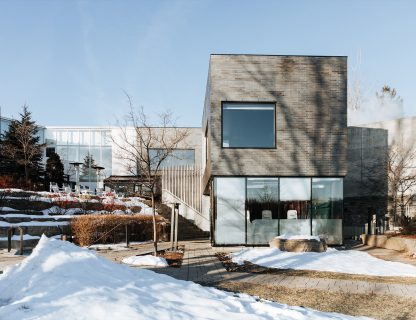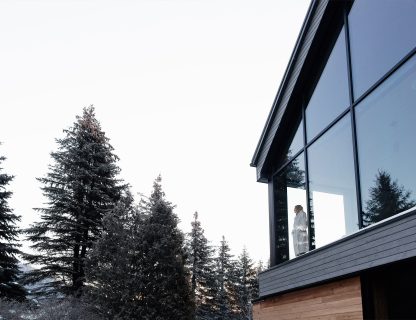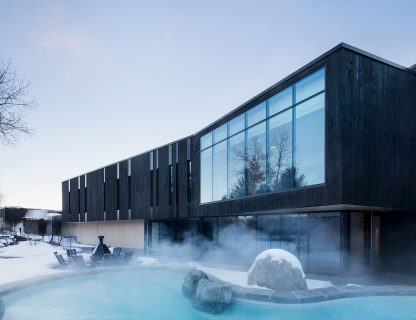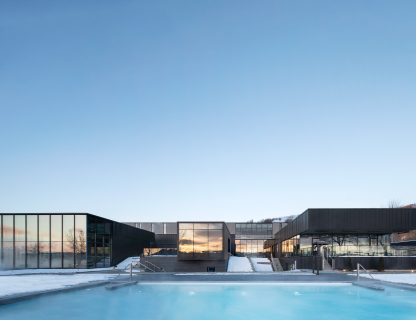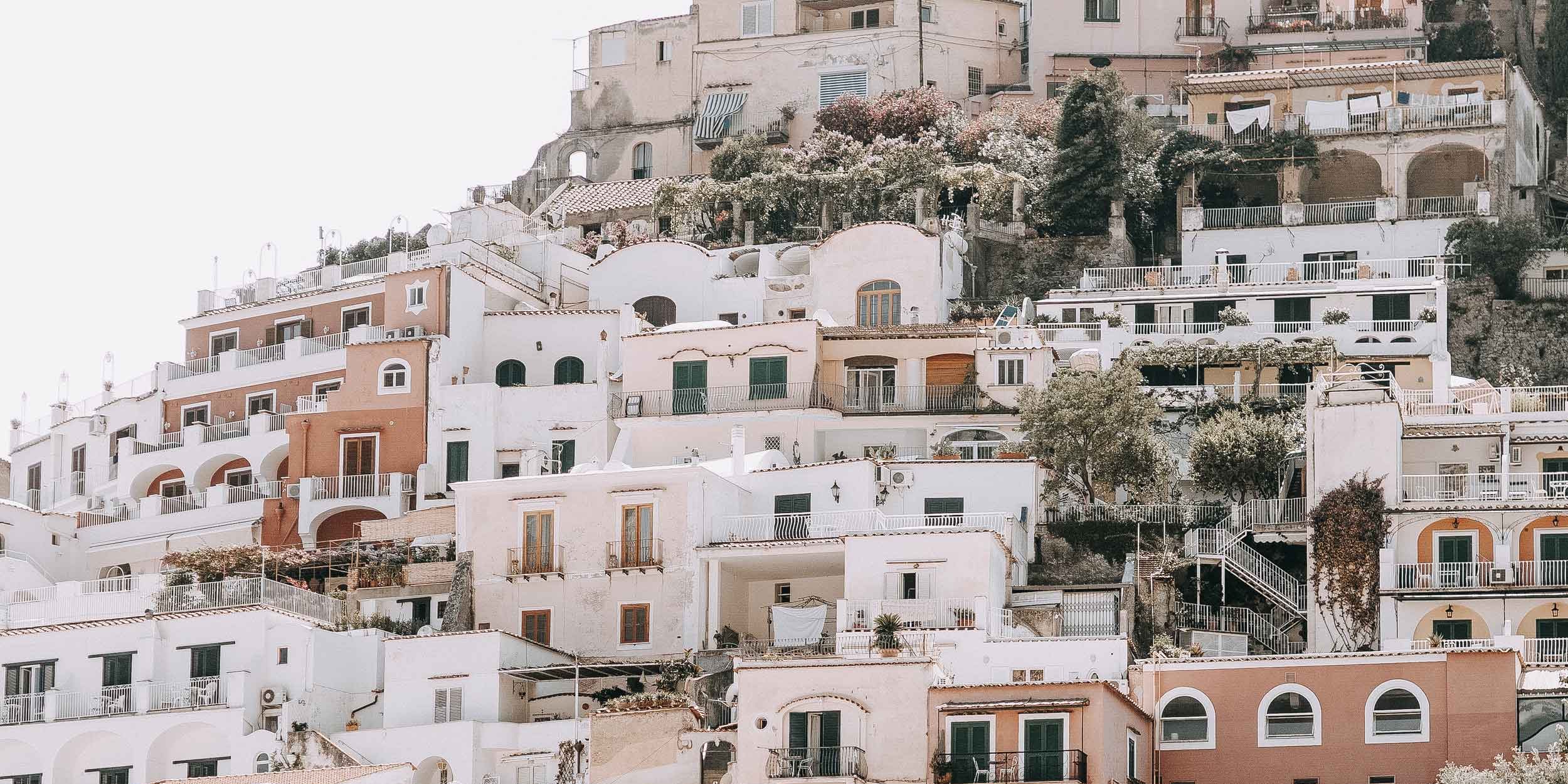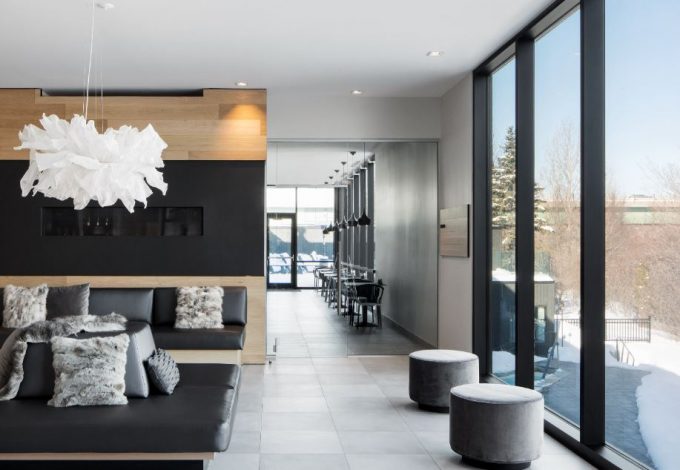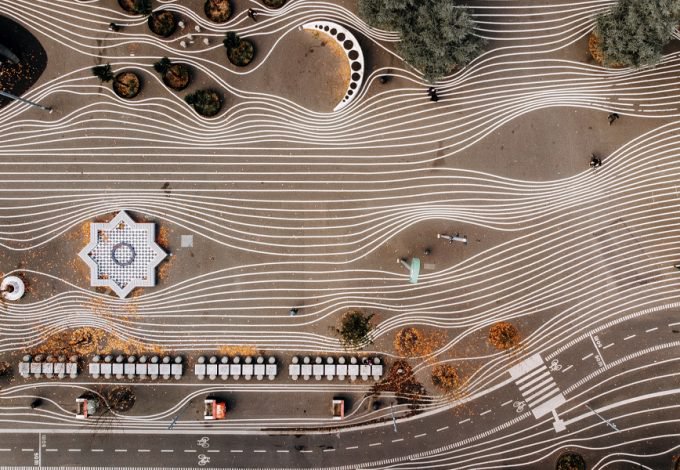COMMUNITY MOVEMENT
Current trends make our homes antidotes to the speed of our lives, places where we can take refuge and recover. More than just an aesthetic for our interiors, the Danish hygge (a concept that comes from a Norwegian word meaning “well thought out”) or the Japanese wabi-sabi (the appreciation of imperfect things and passing time) are actually life philosophies and ways of seeing the world. These lifestyles call on us to stop and reflect to better enjoy things, think more clearly and make better decisions.
Although these principles can be “easily” applied to yourself, your family and your household, incorporating them into our collective life or making them the driving force behind decisions for the common good seems almost impossible. However, in this world where everything is speeding up, casting our collective community environments in stone (both literally and figuratively) can be risky. Afterward, many people would have to live with the consequences of the decisions for a very long time. True dissidents, 262 cities with fewer than 50,000 inhabitants located around the world came together and chose to counteract the bustle of urban life. They provide their citizens and visitors with a lifestyle where slowness means quality, vitality and ecology.
FROM TUSCANY TO THE RCM OF GRANITE
These 262 communities are called Cittaslow towns. This name saw the light of day at the end of the last century when four small Italian città facing an endless stream of tour buses and the restaurant chains that came in their wake wanted to preserve their local colour, customs, gastronomy and quiet mediaeval streets. La dolce vita, indeed! However, cities that adopt the Cittaslow certification haven’t given up on tourism or economic development: slowness doesn’t equate with idleness! Instead, drawing on the slow food movement, which also originated in Italy, Cittaslow towns have cast their lot with urban development that focuses on the quality of amenities, infrastructure and a sense of community. True, this choice could require more planning time or greater short-term investments, but in the long term, this approach leads to more profitable, sustainable and, above all, more enjoyable results.
CITTASLOW / (FROM THE ITALIAN CITTÀ, “CITY” OR “TOWN,” AND SLOW)
A group of communities that commit to slowing their inhabitants’ pace of life to safeguard their quality of life. This quality of life is inspired by the many concepts of slowness, including that of slow living.
Like the mediaeval villages perched on Italian mountains, a Cittaslow is an agglomeration with fewer than 50,000 people clustered around a vibrant village hub. They have invested in an accessible, green city centre where it’s pleasant to walk, cycle and celebrate the local culture, gastronomy and heritage to strengthen community life and intergenerational connections. It’s a place where you go to get to know others, your culture and yourself.
In Canada, there are four Cittaslow towns, including one in Quebec: Lac-Mégantic. When the city had to plan its reconstruction following the tragic accident in 2013, it thought deeply about the future of its downtown. Archival photos of the former downtown of Mégantic revealed that, prior to 2013, the city already had many characteristics of slow urbanism. It was an area with services as well as a good commercial and residential mix and a destination where you could enjoy the view of the lake or meet up at the now tragically famous Musi-Café. The idea of making Lac-Mégantic into a Cittaslow was a unifying project that allowed it to preserve what had made the downtown a lively place while propelling it into the 21st century. The certification doesn’t just draw inspiration from charming mediaeval towns—it also encourages its partners to address contemporary challenges, notably those of an environmental or social nature.
To obtain certification, cities must meet a number of criteria grouped into seven categories. Within these, there are, of course, the main urban principles of our times related to the fight against water and air pollution, waste management and the struggle against solo car use and asphalt’s stranglehold on public spaces. But the Cittaslow movement really stands out because it calls for real changes to urban life. The most innovative proposals include measures promoting telecommuting, the development of resilience plans to address climate change, the establishment of architectural quality offices, the development of regional offerings in health care, the valuing of traditional trades and work techniques, ease of access to agricultural areas and the opening up and diversification of neighbourhoods and ghettos, to name a few.
ONLY FOR SMALL CITIES?
In the mid 2000s, the Cittaslow movement attempted to reach out to big cities. Although this effort wasn’t successful and the criterion of a population below 50,000 remains in place, this view of urban life can still offer some inspiration to our metropolises. In fact, don’t some Montréal neighbourhoods with their shopping areas, such as Ontario Street East and Wellington Street, sometimes seem like small villages? Increasingly, cities are experimenting with temporary urbanism before making their new public amenities permanent. They set up light, pliable wood structures that residents can take ownership of and move. They organize public consultations and co-design sessions involving both the public and professionals. However, beyond wood from pallets and bright colours, the city’s way of doing things must go beyond mere aesthetics and become true long-term visions, much like hygge and wabi-sabi, which are more than decorating trends. Since, for once, inspiration has been flowing from small to large cities and not the other way around, let’s celebrate the small, cozy and intimate!
The Shift to Cittaslow in a Nutshell
CERTIFICATION
The Cittaslow Charter was signed in 1999 by four Italian cities. The NPO that oversees certification provides almost 70 different recommendations and requirements. They cover green technologies, the promotion of cultural heritage and the development of participatory democracy, among others. To obtain Cittaslow certification, a municipality must not exceed 50,000 inhabitants and must meet at least 50% of the criteria defined in the charter. Regional governments and city councils handle the procedures related to certification.
